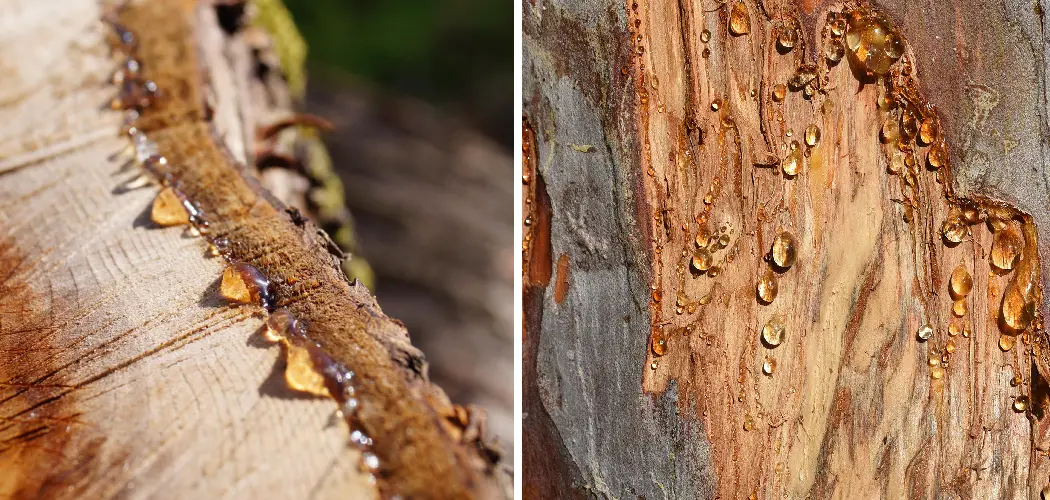Are you dealing with pesky pine sap on your wood furniture or outdoor structures? Removing the sticky residue can seem challenging, but it doesn’t have to be. Here are some tips and tricks for how to remove pine sap from wood.
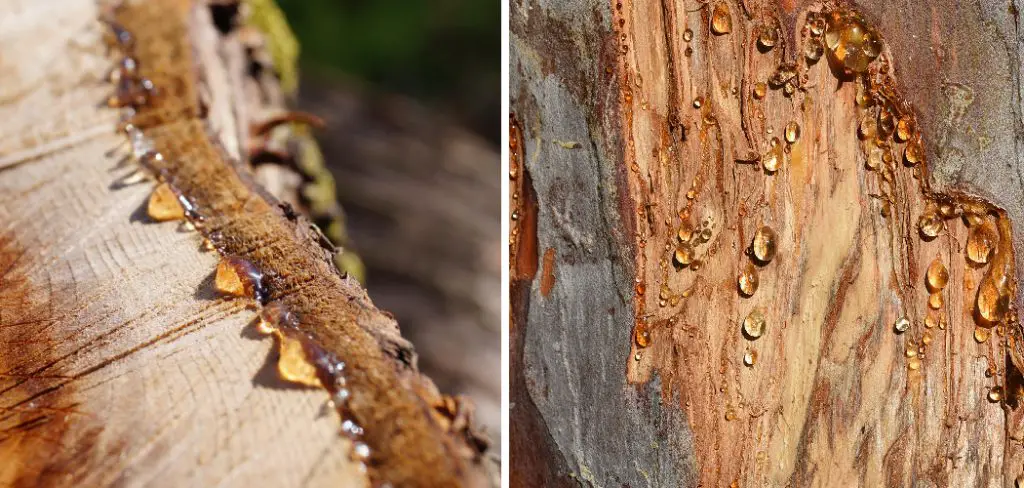
If you’ve ever had the unfortunate experience of dealing with pine sap, you know how difficult it can be to remove from wood surfaces. Even if you don’t work with unfinished wood regularly, it only takes one run-in with sap for you to realize that removing this sticky substance safely and effectively requires special care.
There are easy ways to clean up unwanted pine sap without damaging your furniture or other wooden surfaces. In this blog post, we’ll discuss simple methods for removing pine sap from wood — so get ready for some much-needed relief!
What Will You Need?
Before you get started with your sap removal project, make sure you have all the supplies on hand that you’ll need. Here are a few items to gather up:
- Rubbing Alcohol
- Mineral Spirits
- Isopropyl Alcohol
- Wax Paper or Tarp
- Paint Scraper or Metal Putty Knife
- Soft Cloth
- Car Wax
Once you’ve got your supplies, it’s time to get to work!
10 Easy Steps on How to Remove Pine Sap From Wood
Step 1. Apply the Rubbing Alcohol:
Begin the sap removal process by applying rubbing alcohol or mineral spirits to the affected area. These substances act as solvents, breaking down the sap at a molecular level. Use a soft cloth to apply, and remember, a little goes a long way. Additionally, make sure to use wax paper or tarp beneath the affected area to protect the wood finish.
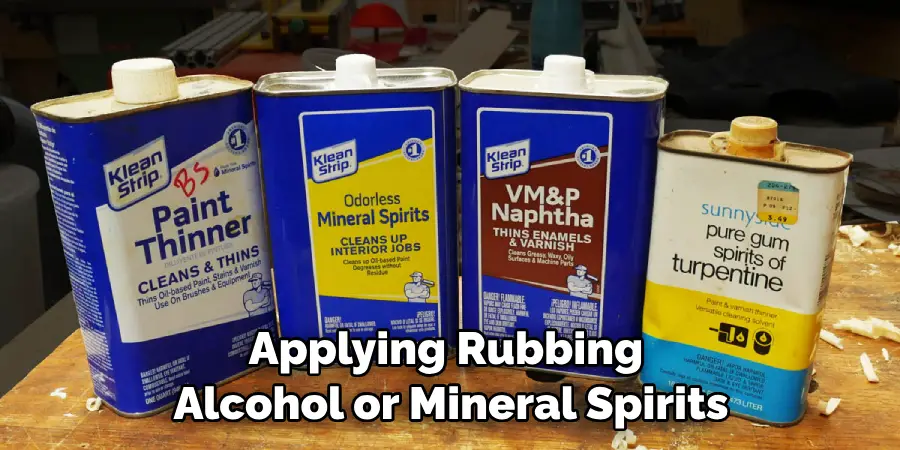
Step 2. Scrape Away:
Using a paint scraper, metal putty knife, or other similar tool, gently scrape away the sap residue. It’s imperative to be careful during this process to avoid causing any damage or scratches to the wood.
As you do so, periodically apply more rubbing alcohol or mineral spirits as needed for added assistance. The solvent will continue to break down the sap, making it easier to scrape off. Remember to wipe your tool clean frequently to ensure the removed sap doesn’t get smeared back onto the wood.
Step 3. Wipe and Rinse:
Once you have successfully scraped off the majority of the sap, it’s time to wipe down the area. Soak a fresh cloth in warm water and gently wipe over the treated area to remove any remaining traces of sap.
Rinsing off the alcohol or mineral spirits is crucial, as leaving these products on the wood for an extended period could potentially harm the finish. After rinsing, thoroughly dry the surface with a soft towel to prevent water damage.
Step 4. Apply Car Wax:
After thoroughly cleaning and drying the surface, it’s time to apply a layer of car wax to the wood. Car wax not only restores the wood’s shine but also creates a protective barrier that prevents future sap from sticking.

Apply the car wax using a soft cloth, following the package instructions. Remember to dry it completely before buffing it off with a clean cloth. This final step will leave your wood gleaming and safeguarded against future pine sap attacks.
Step 5. Regular Maintenance:
To keep your wooden surfaces sap-free in the future, consider implementing a regular maintenance routine. This can involve periodically checking for sap, especially if the furniture or structure is near pine trees.
If you spot any sap, immediately repeat the above steps to remove it. Regular maintenance helps protect the wood and maintains its appearance, saving you from potentially more complex and time-consuming clean-ups later on. Remember, the faster you act on a sap stain, the easier it is to remove.
Step 6. Preventive Measures:
While knowing how to remove pine sap from wood is essential, prevention is always better than cure. Consider using protective covers for your outdoor furniture or structures near pine trees to prevent sap droppings.
Additionally, if your wooden surfaces are painted or varnished, remember to regularly reapply these protective coatings to create a barrier against sap adherence. By taking these preventive measures, you can significantly reduce the occurrence of sap droppings and save yourself a lot of effort in the long run.
Step 7. Consider Professional Help:

If the sap stain is particularly stubborn or in a hard-to-reach area, it might be worth considering professional assistance. Professionals have the tools and expertise to safely and effectively remove sap without causing damage to your wood.
This is especially important for antique or expensive wood pieces where preservation of the finish is critical. Remember, it’s better to invest in professional help than risk damaging a valuable piece with DIY efforts.
Step 8. Evaluate and Repeat:
After you have followed these steps, evaluate the state of the wood. If traces of sap remain, don’t worry. It may take more than one attempt to obliterate the sticky residue. Repeat the steps as necessary until all the sap is gone. Patience is crucial here, as rushing the process may result in damage to the wood. Always rinse the wood thoroughly between applications of solvents to prevent any potential harm to the finish.
Step 9. Post-Cleaning Care:
Once all the sap has been successfully removed, it’s time for some post-cleaning care. Consider applying a high-quality wood conditioner to the cleaned area. This will help restore the wood’s natural oils, which might have been stripped away during the cleaning process.
Apply the conditioner as per the instructions on the packaging, and then buff it off using a clean, dry cloth. This step helps to rejuvenate the wood, leaving it looking fresh and vibrant while also providing additional protection against future sap stains.
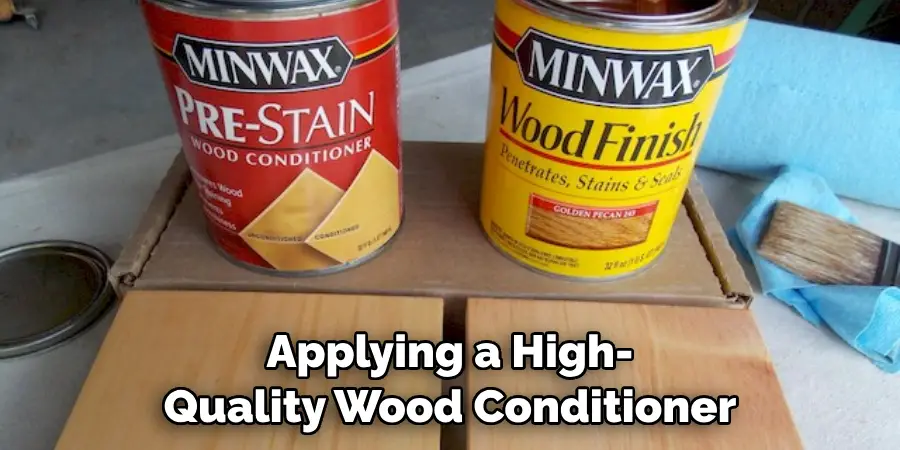
Step 10. Prevention Through Tree Care:
The final step in managing pine sap on your wooden surfaces is to consider the source of the problem – the pine trees themselves. Regular tree care can help reduce sap production, especially in the warmer months when sap flow is higher. Pruning the branches that overhang your wooden structures or furniture can significantly reduce the amount of sap that falls onto them.
Furthermore, ensuring that your trees are healthy and well-nourished can prevent excessive sap production, often associated with stress or disease in the tree. Remember, a healthy tree is less likely to cause sap issues, making cleaning tasks much easier in the long run.
By following the above steps, you should have a clearer idea of removing pine sap from wood. With patience and care, restoring the natural beauty of your wood surfaces while protecting them against future sap droppings is possible.
5 Additional Tips and Tricks
- Use a putty knife or razor to scrape off the pine sap. This is best done after wetting the sap with mineral spirits or rubbing alcohol, which will help soften it for easier removal.
- Use adhesive remover like Goo Gone to dissolve the sap on finished wood surfaces. Again, use a clean cloth and rub gently in circular motions until all the sap is gone.
- Use fine grade steel wool and apply to the area with gentle pressure, rubbing in a circular motion until all of the sap is removed.
- If any stains are left behind after removal, use vegetable or baby oil and rub onto the affected area with a clean cloth until the stains are gone.
- For tougher sap stains, sanding may be necessary. Use a fine-grit sandpaper and gently sand the area until the stain is gone. When finished, use a cloth and mineral spirits to remove residual dust or residue. Be sure to wipe away any remaining oil before finishing with a coat of sealant or varnish to protect from future stains.
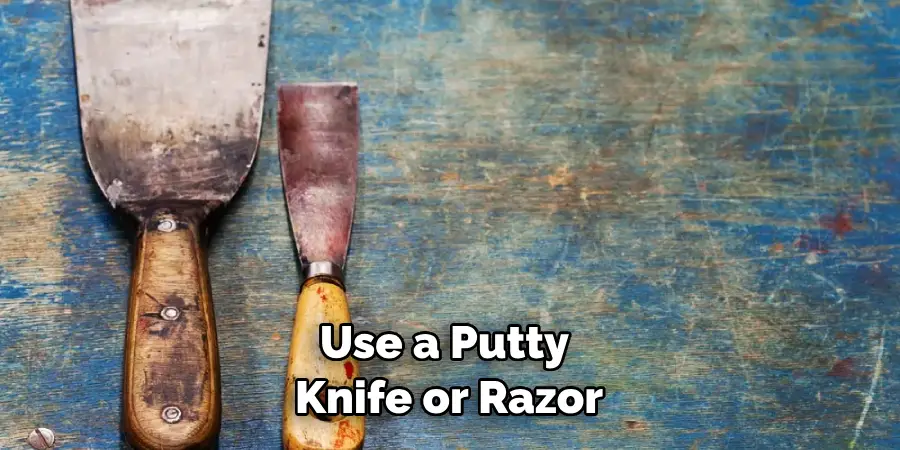
These tips should help remove even the toughest pine sap stains, leaving a wood surface looking as good as new. Don’t forget to take extra care with finished wood, or use protective gloves when scraping and sanding for best results!
5 Things You Should Avoid
- Never use a harsh cleaning solution such as bleach or ammonia to remove sap from wood, as these can damage the finish.
- Do not leave any residue on the wood after cleaning it, as this could lead to staining and discoloration in the future.
- Avoid using harsh scrubbing motions, as this could scratch or damage the wood. Instead, use a clean cloth and gentle pressure when rubbing in any cleaning solutions or rubbing off sap stains.
- Do not leave any mineral spirits or adhesive remover on the wood for too long, as this could cause discoloration on the surface. Wipe away all residue with a dry cloth after cleaning.
- Refrain from using metal tools or wire brushes, as these can leave behind scratches and other damage to the wood surface. Stick with plastic putty knives and fine grade steel wool for the safest results.
Following these tips will help you clean pine sap off of your wood surfaces without causing any additional damage. Always use protective gloves and take extra care when scraping, sanding, or using any cleaning solution on your wood surfaces. Taking the time to care for your wood properly will help preserve its beauty and protect it from future damage.
How Do You Dry Sap Out of Wood?
If sap has gone deep into the wood, you may need to resort to drying it out. This can be done by heating a metal spoon over a flame and pressing it against the surface of the wood. Be cautious during this process, and move the spoon around quickly to avoid burning or scorching the wood. Once heated, use a cloth to rub away the sappy residue gently.
Alternatively, if you have access to a heat gun or hair dryer, you can use these tools on the surface of the wood to help speed up the drying process. Heat guns and hair dryers should be used with caution, however, as they may cause damage to finished wood when not used properly.

No matter which method you choose for removing pine sap, it is important to take the necessary steps to protect your wood surfaces from future damage. It is best to apply a sealant or varnish after the cleaning process to ensure that any remaining moisture won’t penetrate into and damage the wood. These extra precautionary measures will help protect and preserve your wood surfaces for years.
Why is Pine Sap Sticky?
Pine sap is a natural substance produced by the pine tree, and it contains a high amount of sugar. This sticky substance protects the trees from predators, disease, and other environmental factors. It also acts as a waterproof barrier to keep moisture from entering the wood and causing damage. As such, removing this sap can be difficult and requires special care when done improperly.
So, when dealing with pine sap on wood surfaces, take extra care and use the proper cleaning techniques to ensure that your wood remains damage-free. With the right techniques, you’ll be able to remove even the most stubborn pine sap stains quickly and effectively!
Conclusion
With all of the DIY and homemade methods for cleaning up pine sap on wood, you’re sure to remove any accumulated pesky residue. Cleaning up pine sap on wood can be a tedious task – so make sure to try all sorts of methods before resorting to harsher chemicals or powerful tools.
Furthermore, it’s important to remember that with any wire brush or chemical remover, always use it in well-ventilated areas and wear appropriate protective gear if necessary!
With these tips in mind, you’ll be able to get your wooden surfaces looking sparkly clean again without a headache. Allowing more time for your cleaning effort will often lead to better results as so don’t wait – start soon and take advantage of the remedies presented here!
Hopefully, the article on how to remove pine sap from wood has been informative and useful. With these tips in mind, you’ll be able to clean up pine sap on wood with ease. Good luck and happy cleaning!

